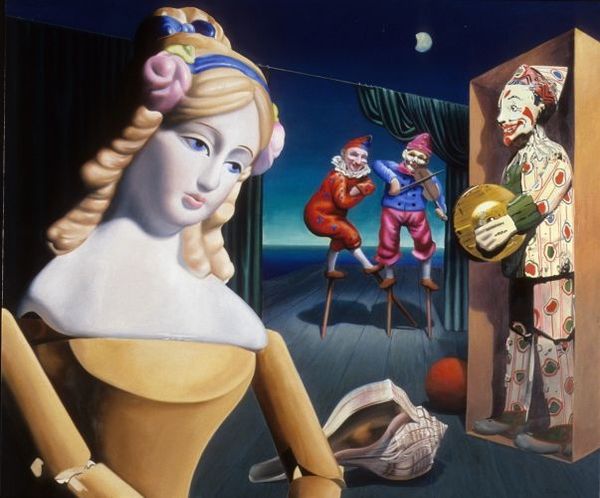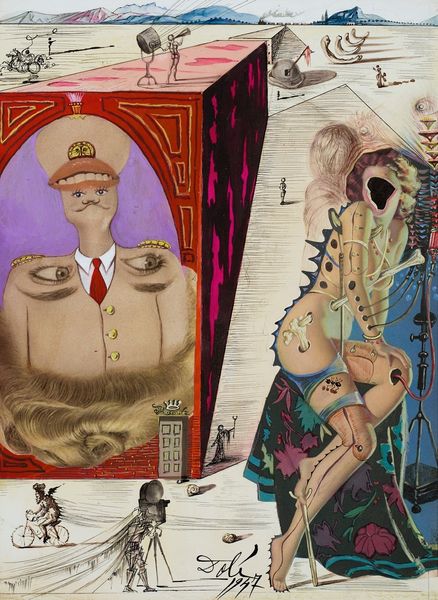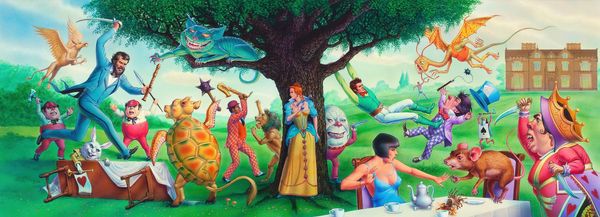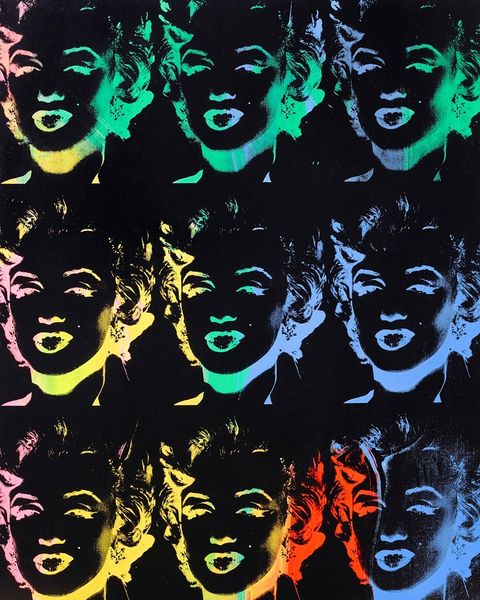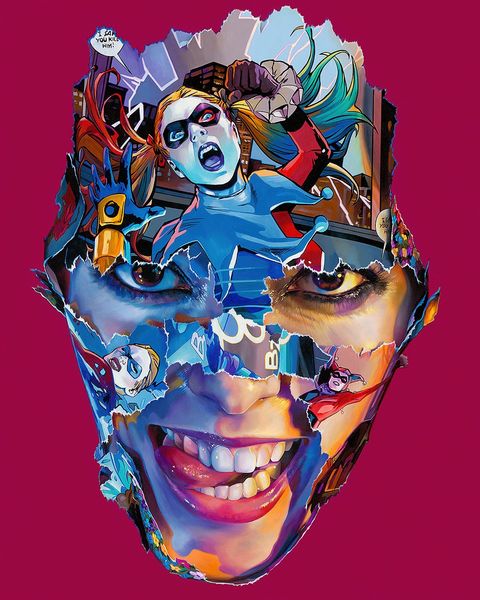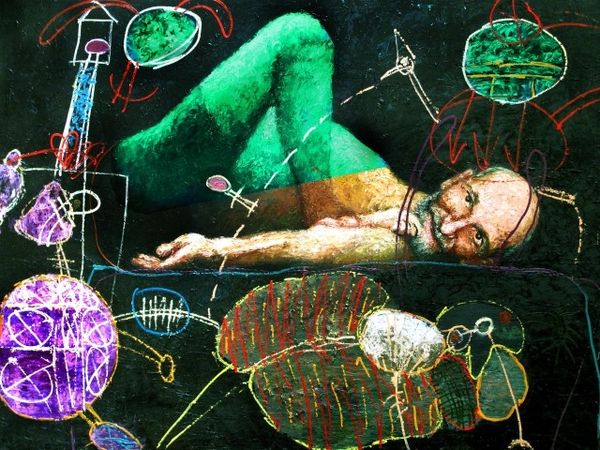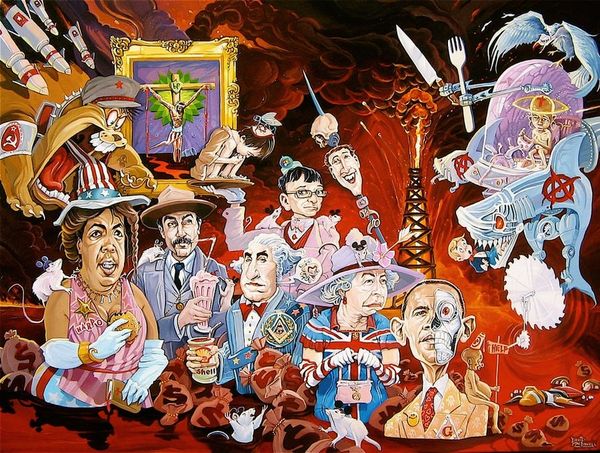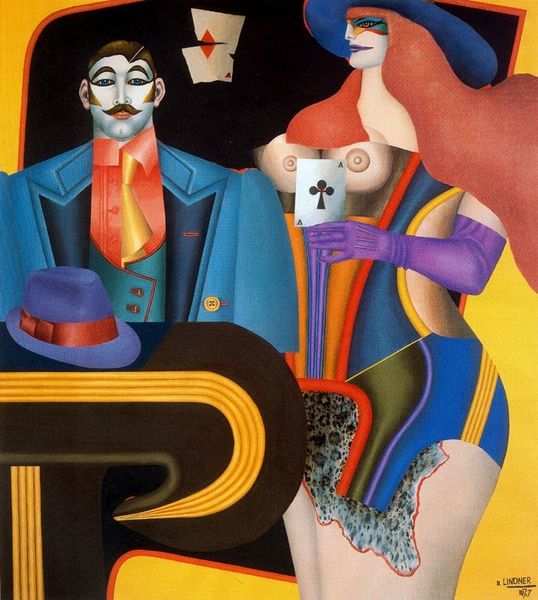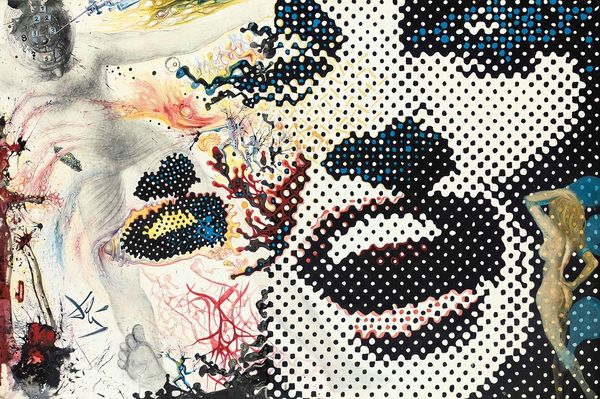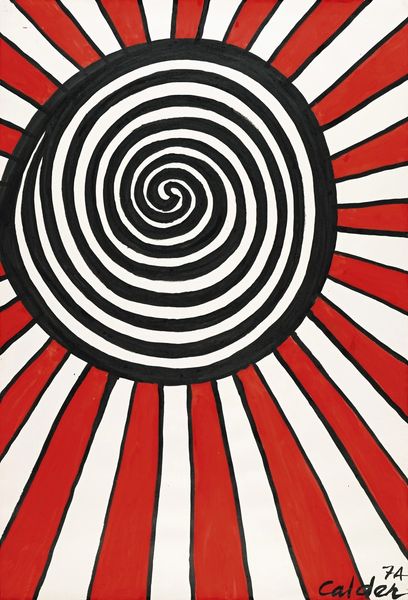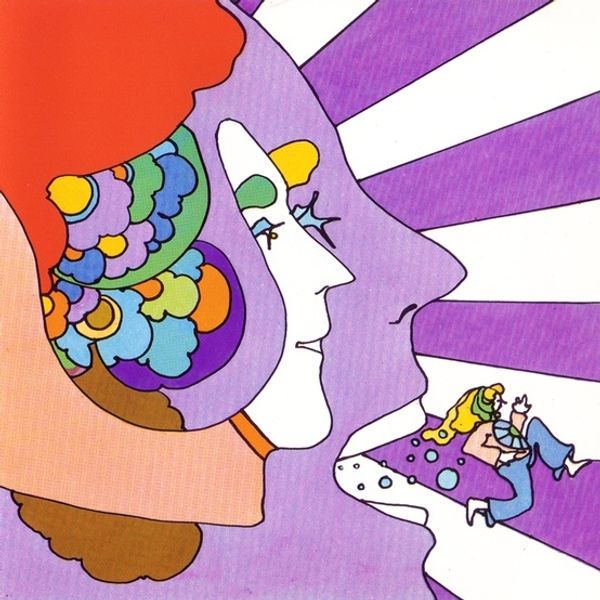
Copyright: Cindy Sherman,Fair Use
Curator: Instantly, I find these clown figures both unnerving and familiar—it reminds me of the push and pull we experience when confronted with art that holds up a mirror to our own anxieties. Editor: Indeed, Sherman’s “Untitled #420”, created in 2004, presents us with a diptych, a photographic work that compels us to consider not only the individual portraits but the relationship between them. Sherman herself, of course, embodies both figures. Curator: Precisely. Look at the composition; a male and female clown, distinct yet bound by that swirling, almost hypnotic backdrop. What I find compelling is how the balloon animals transform what is meant to be joyous into something rather unsettling, even monstrous. It’s the archetype of childhood corrupted. Editor: I think that reading speaks to Sherman’s larger project; throughout her career, she's investigated identity and representation through the lens of social constructs. Consider how gender is performed here, and consider how it’s been performed across culture. What statements, what historical truths is Sherman reflecting, and refracting back to the audience? Curator: She uses the established symbolism of the clown, a figure meant to elicit laughter, and distorts it. The white makeup, the exaggerated features—these echo rituals across cultures, where masking is employed to reveal a deeper, sometimes darker truth. Think of ancient theatrical traditions; clowns hold the power to mock, to critique. They challenge societal norms, acting as tricksters and social commentators. Editor: And Sherman, of course, has long challenged societal norms within the contemporary art world, consistently addressing questions of authorship, originality, and the very nature of photography as art. These photographs push viewers to think about image construction and how we engage with these carefully crafted reflections of ourselves and others. These pieces function as interventions. Curator: They make me think of our modern digital hall of mirrors—filtered realities, curated personas. Sherman captured something profound about the artifice of identity, long before social media's total dominance. Her work remains strikingly relevant because it forces us to question the authenticity of images we consume. Editor: Yes, Sherman provides visual strategies of resistance to oversimplified messages of contemporary visual culture. It invites the spectator to not passively accept what they see at face value, and understand imagery within our socio-historical environment. Curator: A vital exercise in our world that seems flooded with surface appearances and performative displays. Editor: Exactly. Sherman compels us to consider the depths beneath the surface, to embrace the complexity of identity itself.
Comments
No comments
Be the first to comment and join the conversation on the ultimate creative platform.
